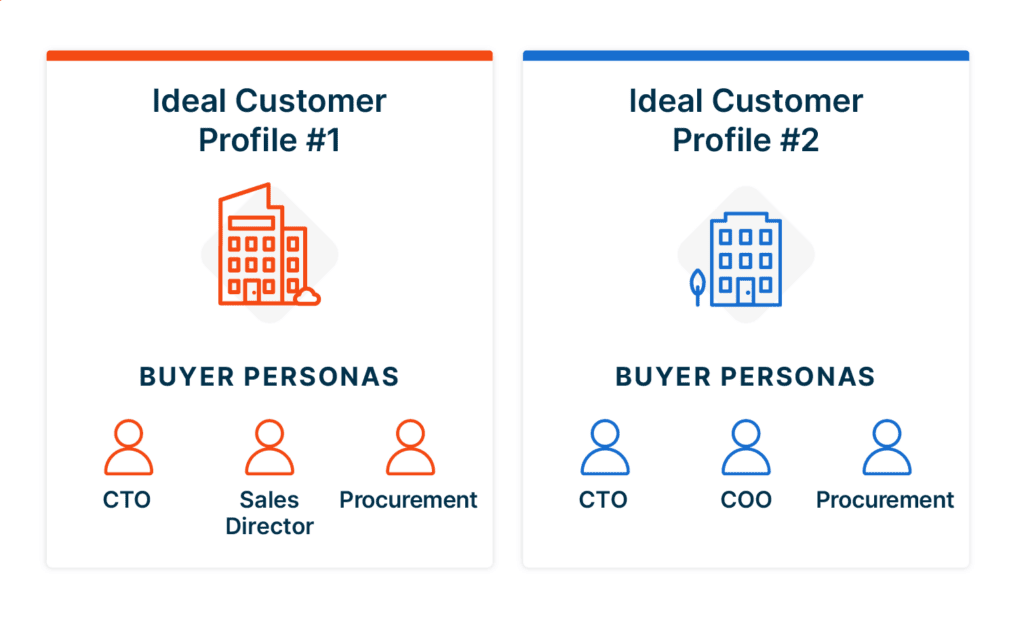
B2B Content Syndication for Qualified Leads: The Complete Guide
Article Summary
Content syndication is a strategic approach to maximize the reach and ROI of your business content. By partnering with third-party organizations, content is systematically shared across channels where potential buyers are active, ensuring a broader market segment is reached. This method is not just about expanding reach; it's about targeting the right audience with precision. Whether it's blogs, ebooks, webinars, or videos, any content type can be syndicated. The key benefits of this strategy include higher content ROI, increased sales conversions, cost-effective pricing models, and tangible lead generation results. Moreover, with the assistance of an experienced agency, businesses can optimize their content syndication efforts, ensuring that the content resonates with high-intent potential buyers. This approach not only fills the sales pipeline but also ensures that the leads generated are qualified and have a genuine intent to purchase.
Content syndication earns qualified leads for your business by sharing your content directly with your target audience to reach a broader market segment.
When you invest in content syndication, you maximize the return on content you create. You take charge of your digital marketing ROI (rather than hoping the Google powers-that-be will gift you high rankings) and put your content in front of high-quality, high-intent potential buyers.
Following these 15 content syndication best practices will help you make the most out of your content syndication strategy.
Key Takeaways:
- Content syndication involves systematic, targeting sharing of content across channels where your buyers are active
- Any type of content can be syndicated—blogs, ebooks, webinars, videos, and more
- A quality content syndication strategy includes focused goals and KPIs, targeted lists, and optimized, high-performing content
- Key benefits of content syndication include higher content ROI, more sales conversions, cost-effective CPL pricing, and highly measurable lead-gen results
- Content syndication is best executed with the help of an experienced agency partner
🤫 PS: Looking for pricing on content syndication leads? Get a price list here.
Content Syndication for Qualified Leads: Not Your Average Lead-Gen Strategy
Before we dive into ways you can boost the ROI of your content syndication campaigns, let’s define the strategy clearly. Content syndication means partnering with third-party organizations to drive lead generation for your business.
Content is delivered to target audiences based on traits outlined in your ideal customer profiles and buyer personas—things like industry, company size, job title, seniority level, and more. In addition, quality content syndication partners can target content to multiple stages of the buyer journey and use multichannel approaches to reach them in various places.
The content they syndicate could be high-performing content you’ve published in the past, or they may help you create content specifically for your syndication campaigns. In many cases, it’s a mix of both. Any kind of content can be syndicated, including:
- Blog posts
- E-books
- Whitepapers
- Technical Comics
- Webinars
- Podcasts
As you can see in the chart below, content syndication involves a two-way flow of information— the content creator (you, often with the help of your content syndication agency) send content through to a repository. It’s then published on partner websites, which send back performance data your provider can translate into formal reports and actionable insights.
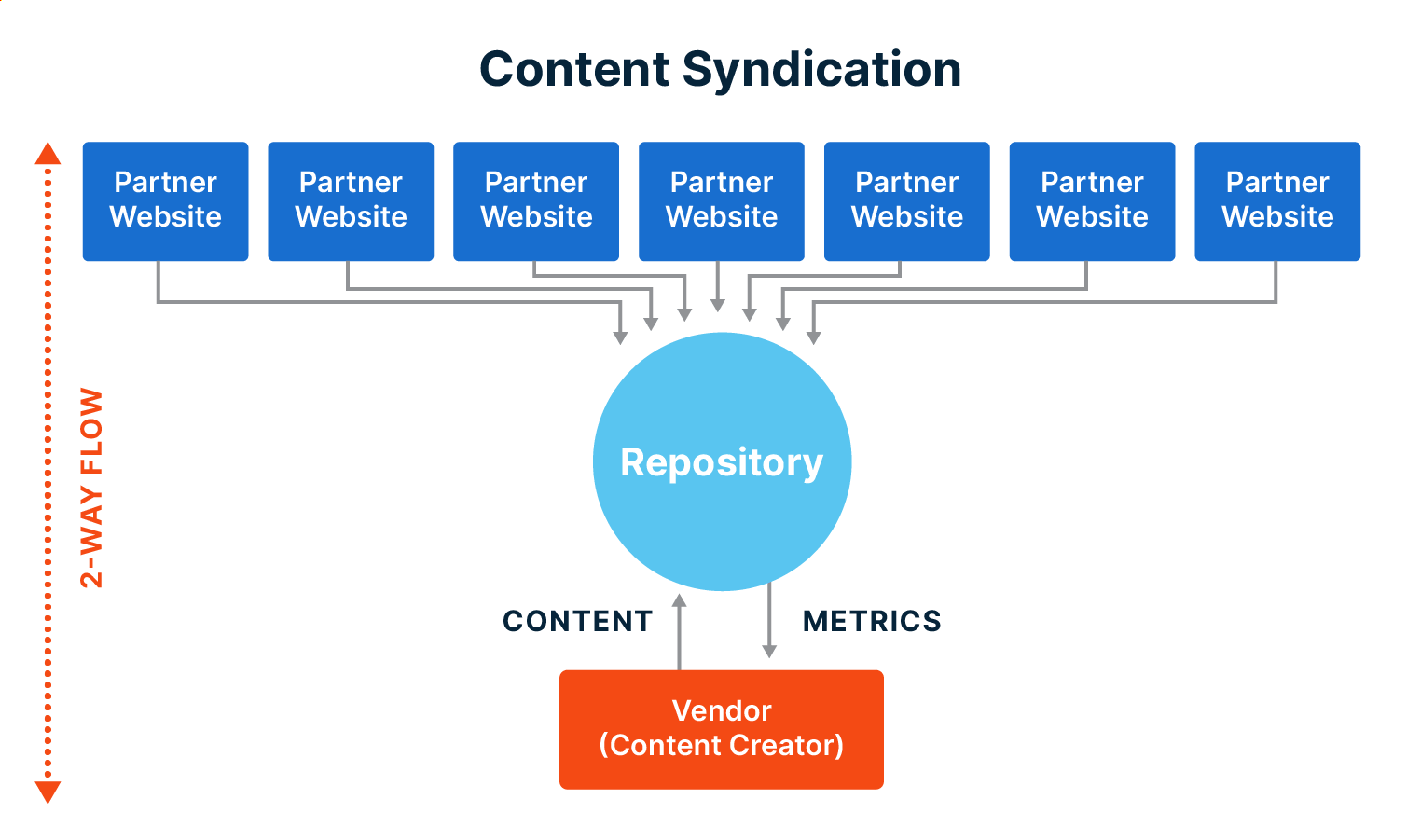
The end result? A hyper-targeted approach to lead gen that not only keeps your pipeline full but ensures the leads that come through are high-fit, qualified, and have real intent to purchase. This means happier sales teams, more closed deals, and higher revenue for your business.
15 Ways To Boost Your Content Syndication ROI
1. Know Your ICP and Buyer Personas Inside and Out
You can’t execute a great content syndication strategy that earns qualified leads without first knowing your target audiences inside and out—that means having fully defined and updated ideal customer profiles (ICPs) and buyer personas.
As a reminder, ICPs describe organizations that are best fit for your solutions. They include traits like company size, industry, budget, and location (among others). Your buyer personas describe the individual decision makers within those organizations, including their position titles, level of experience, and professional motivations.
Even if you do know your ICPs and buyer personas (and update them often), it’s a smart idea to take a fresh look at them as you develop and plan to launch a content syndication strategy. They will be one of your main resources for making decisions about which content to use and where to target it (which audiences, channels, markets, etc.).
2. Decide on Your Goals To Guide Your Actions
Before going into content syndication, you must establish why you want to do it. For example, are you looking to sell something, build your database with new leads, or increase your brand awareness?
Knowing what you want to accomplish with your content will guide you in choosing great content for the job. It will also tell you what processes you should have in place for receiving your lead list.
Marketers who set goals are 377% more successful in their efforts than those who don't.
3. Choose KPIs to Measure Your Success
The last thing you want to do is invest in a strategy, and you have no idea whether or not you saw any positive return from it. While 84% of marketers have a set content marketing strategy, only 61% measure the ROI of their content marketing.
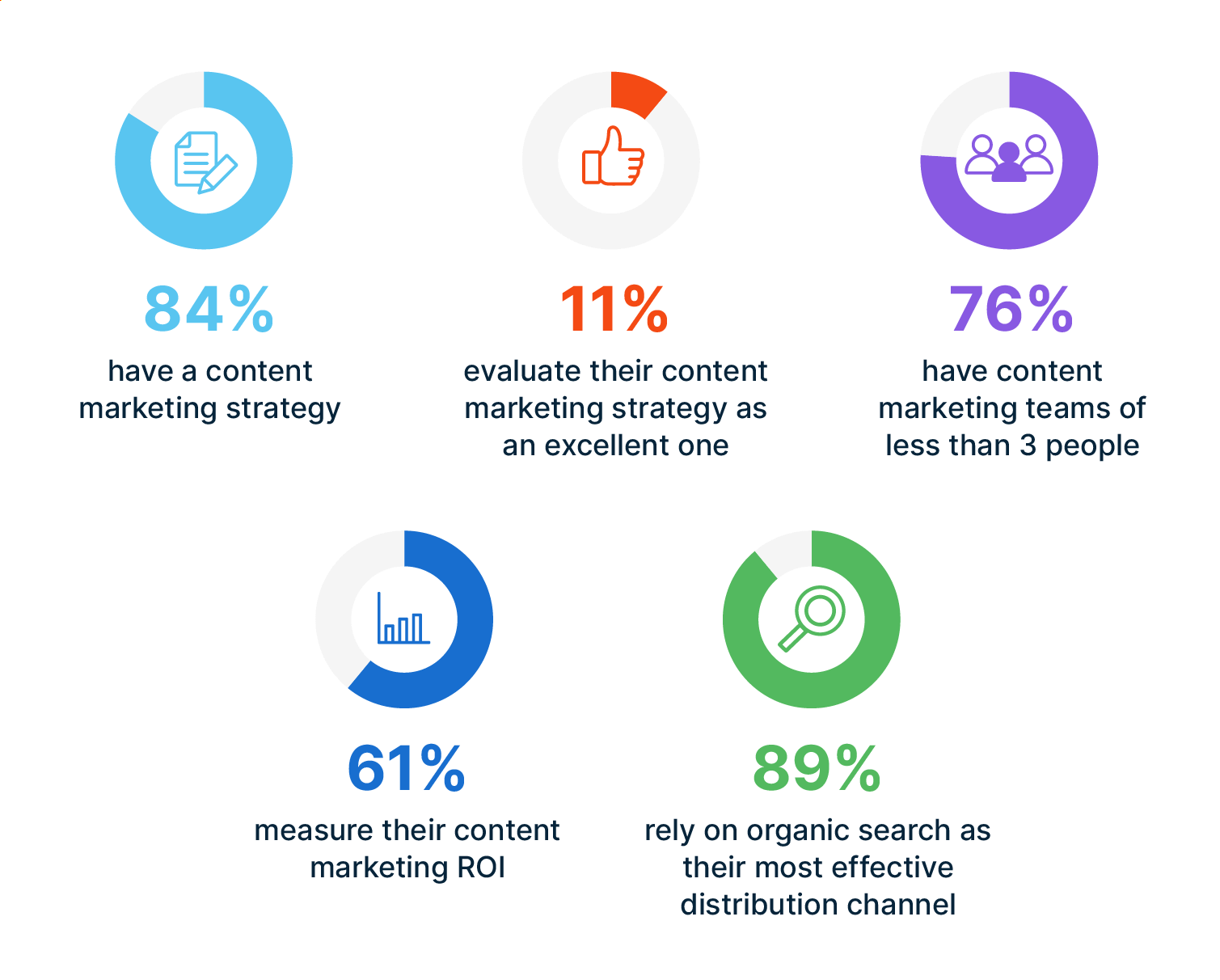
Establishing key performance indicators (KPIs) that align with your goals will provide a measure for your success. For example, if you’re looking to fill your database with new leads, you can measure your success by the number of leads you receive.
4. Connect Your Goal to Larger Business Objectives
How is your content marketing strategy goal-focused and linked to larger business objectives?
It shouldn't be an isolated strategy but part of a bigger marketing picture. Each piece of content you share, whether through syndication, your blog, or email, is another piece of the puzzle. Together, you're building a framework that moves the buyer from a stranger to a sales-qualified lead.
You need to understand how your syndication goals fit in that framework, then create relevant strategies before and after to keep your content marketing machine moving smoothly.
5. Work with a Relevant Content Syndication B2B Vendor
The other key ingredient of content syndication is knowing your audience and understanding your goal.
One of the best actions before starting is creating a buyer persona. This will outline who exactly you’re trying to reach with each piece. You want to create content that's relevant to that audience. However, it's critical to work with B2B content syndication vendors that can reach that audience and understand their needs, just like how ActualTech Media understands tech professionals.
6. Target Your Audience Through Filters
You should avoid working with any vendor that doesn't offer you filters. Your filters will ensure that you’re only paying for leads that match your target buyer, and you don't receive a list of useless contacts.
For example, some of the filters that ActualTech Media uses include:
- Geography
- Company size
- Number of contacts per company
- Job titles
- Roles
- Industry
You might also add your own question to help you qualify the lead, such as when they're planning to purchase a service.
7. Create a Target Account List
You can also use a target account list with specific business names and contacts for direct content syndication.
A target account list is part of account-based marketing and helps you reach those high-value buyers with a need and ability to purchase from your brand.
You can also use your target account list to reach out to leads that stopped responding in previous campaigns.
The ideal length of your target account list should be 500 or more professional contacts.
8. Use Your Best Assets
Your syndicated content is at the heart of your strategy and requires careful consideration. If it's not relevant to your audience and doesn't offer them value or solve their pain points, it isn't going to perform well, and you won't be meeting those KPIs.
Thankfully, you don't always have to start from scratch. Instead, find some of your best-performing content and refresh it before reusing it. Most content syndication strategies work with content you already have.
If you don't have anything that works well for content syndication, you can create something for your specific needs. Some of the best-performing content that ActualTech Media can help you create includes:
- Whitepapers
- E-books
- Tech briefs
- Infographics
- Video
Regularly change the content you use to keep it fresh and engaging.
9. Use Vendors That Offer Authentic Leads
The quality of your leads is more important than how many leads you receive. You don't want to receive a list of a thousand new leads just to throw out half of them because they're unusable.
Look at the vendor's content syndication services to see whether it includes cleaning and vetting processes. The best vendors will help you filter out leads using a suppression list and pre-clean the list so you aren't getting old or expired contacts.
10. Keep Your Content Short and Memorable
The fastest way to lose your leads is by sending content that isn't easily digestible. If your audience has to commit hours of their time and they need to focus on understanding your asset, it probably isn't ideal content to share.
Professionals have busy lives. That's why they respond best to content they can quickly scan for relevant information, read in less than an hour, and fully understand.
Roughly 58% of marketers say shorter lead magnets work best. Short content, in this instance, is anything under 5,000 words.
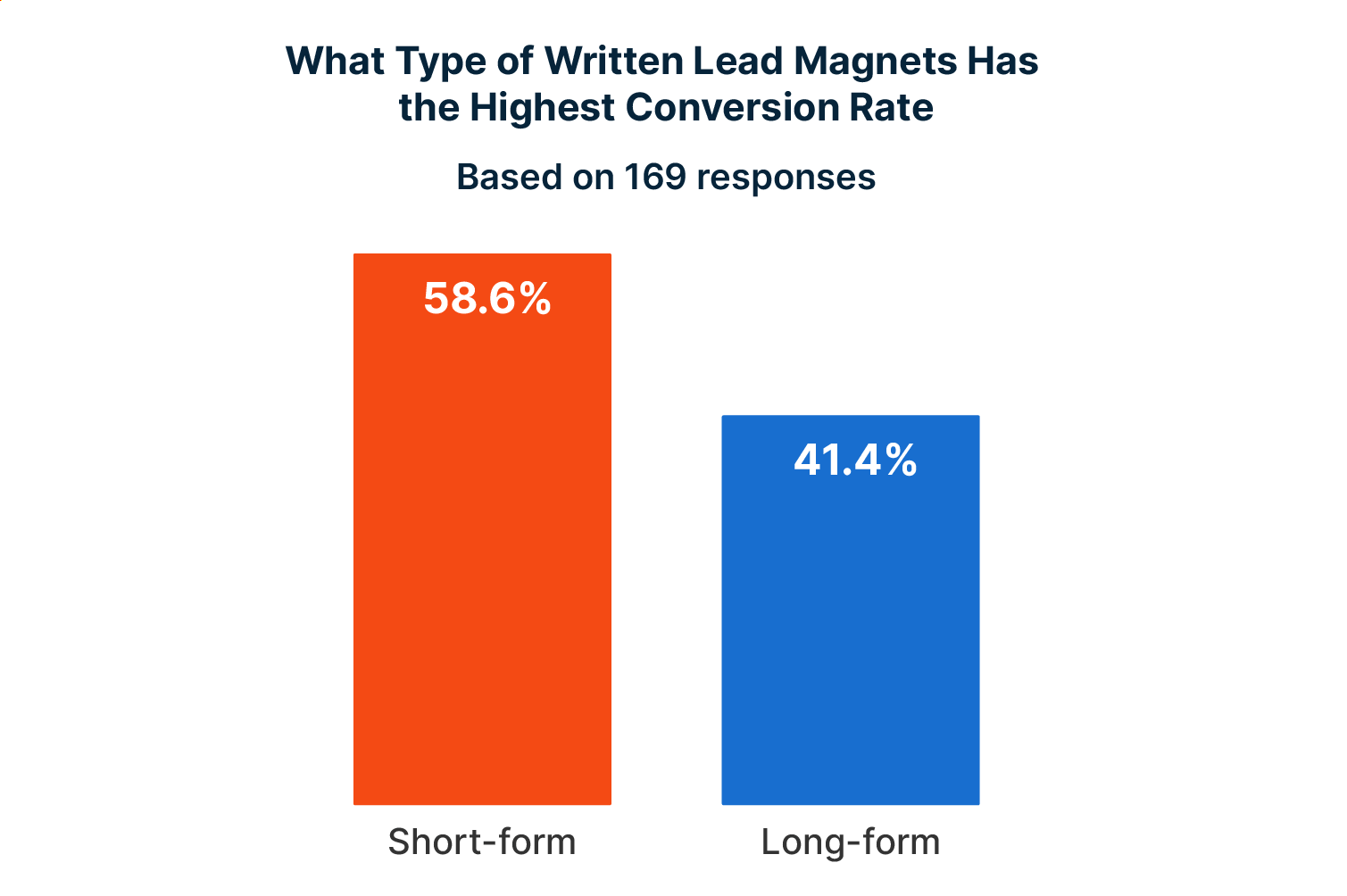
11. Nurture Your Leads before Moving to Sales
The leads you bring in from content syndication are rarely ready to buy your products on the spot. So, if you hand those leads directly to sales to close, they're not going to be very successful. On average, 50% of your leads in your system aren't ready to buy. That's why you need a nurturing process.
Your nurturing process slowly warms them up to purchasing while also qualifying them for sales. For example, you might put them in an email drip campaign. Once they've interacted with a set number of emails, you can move them on to the next stage.
However, if you see a lead in your database interacting with your content and showing several other behaviors demonstrating a high intent to purchase from your brand, you can move that contact directly to sales.
12. Activate a Multichannel Strategy
McKinsey reports that B2B buyers now engage with brands on 10 channels (or more) during the purchase journey. Further—as every seasoned marketing and sales professional knows—it takes multiple touches before an interested buyer converts to a lead, and several more before they convert to a customer.
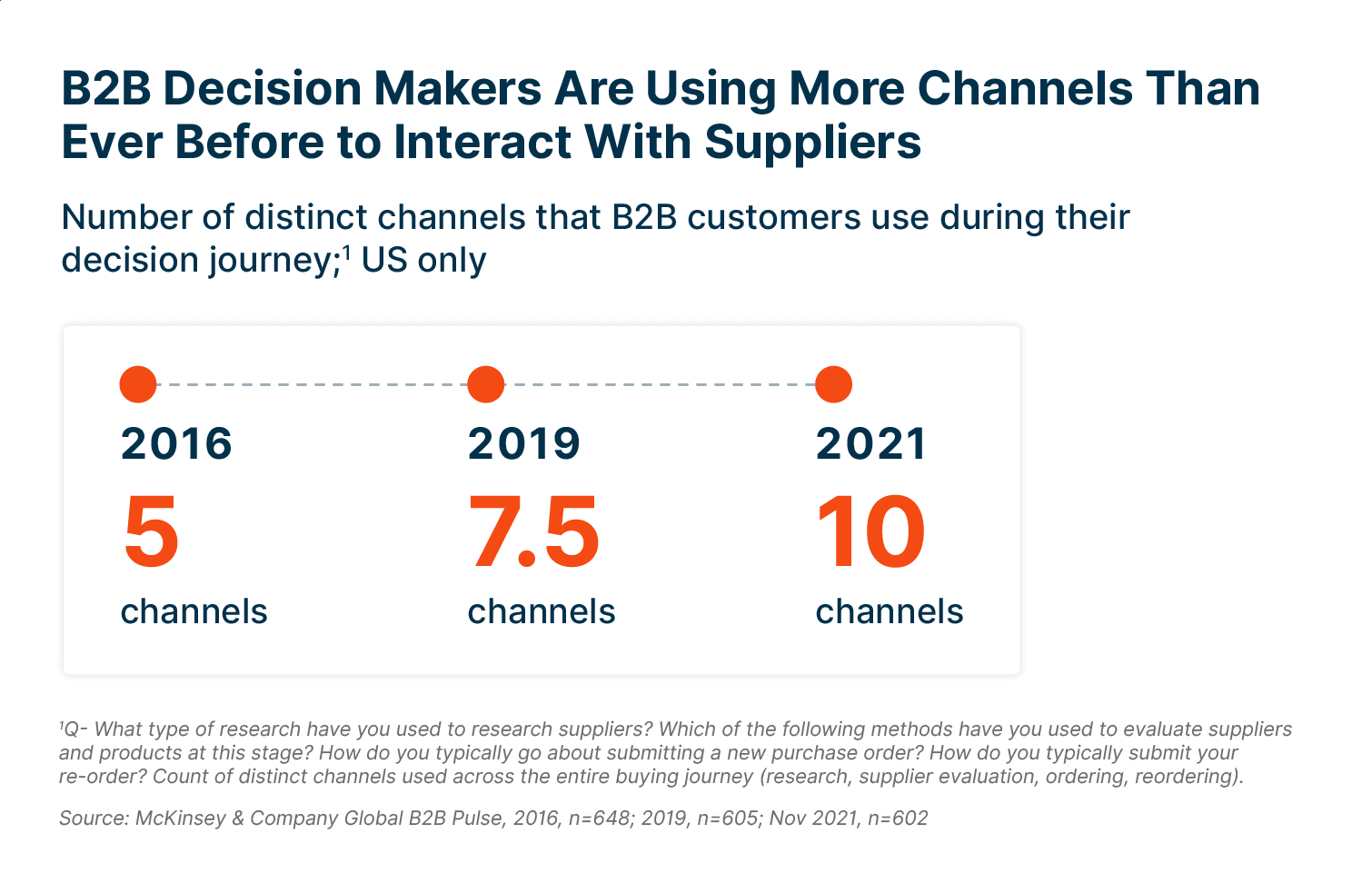
Your best chance of reaching your target audience through content syndication is by activating a multichannel strategy. Do your research on where your buyers prefer to engage, and right out of the gate, publish your content across those channels.
13. Align Marketing and Sales
Content syndication aimed at qualified leads is going to give your pipeline a boost, and you need to be sure your sales team is ready to handle the influx. Organizations are more efficient and profitable in general when marketing and sales teams are aligned, but it’s particularly important to collaborate closely when new initiatives are being launched.
Ensure your sales team knows when your content syndication strategy will be implemented and which audience(s) it will target. Ideally, your marketing and sales teams can work together in an ongoing way to evaluate the success of the strategy across every stage of the pipeline.
14. Monitor Progress with Data-Driven Reporting
Part of the ability to improve your strategy is knowing that’s working and what’s not—and why. You can uncover these insights with data-driven performance reporting. In an earlier step, you already identified the KPIs you’ll use to measure your strategy’s success. Implement a formal and documented process for reporting that centralizes your data and ensures it gets to everyone who needs to see it.
15. Revisit Your Asset List Often
Naturally, you’ll continue to create additional content over time. Monitor the performance of new content and add your best-performing assets into the content syndication rotation. Further, check to be sure the assets you’re already using are yielding results as expected.
Consider also the timeliness of trends and topics. Eliminate pieces that are no longer relevant to your audiences and add new ones to keep your topic coverage fresh and current.
The Benefits of Content Syndication
When you execute a well-developed content syndication plan, you’ll see the impact in the form of tangible, measurable business results. Let’s walk through five of the most important benefits you’ll experience from implementing content syndication for qualified leads and how to measure them effectively.
Boost ROI of Existing Content
Content marketing is an essential part of every modern digital marketing strategy. The average B2B buyer now interacts with 13-plus content assets throughout their buyer journey, which is now heavily guided by independent research.
They also source content from a variety of places, including vendor websites, social media, internet searches, email, and through other publications they read regularly.
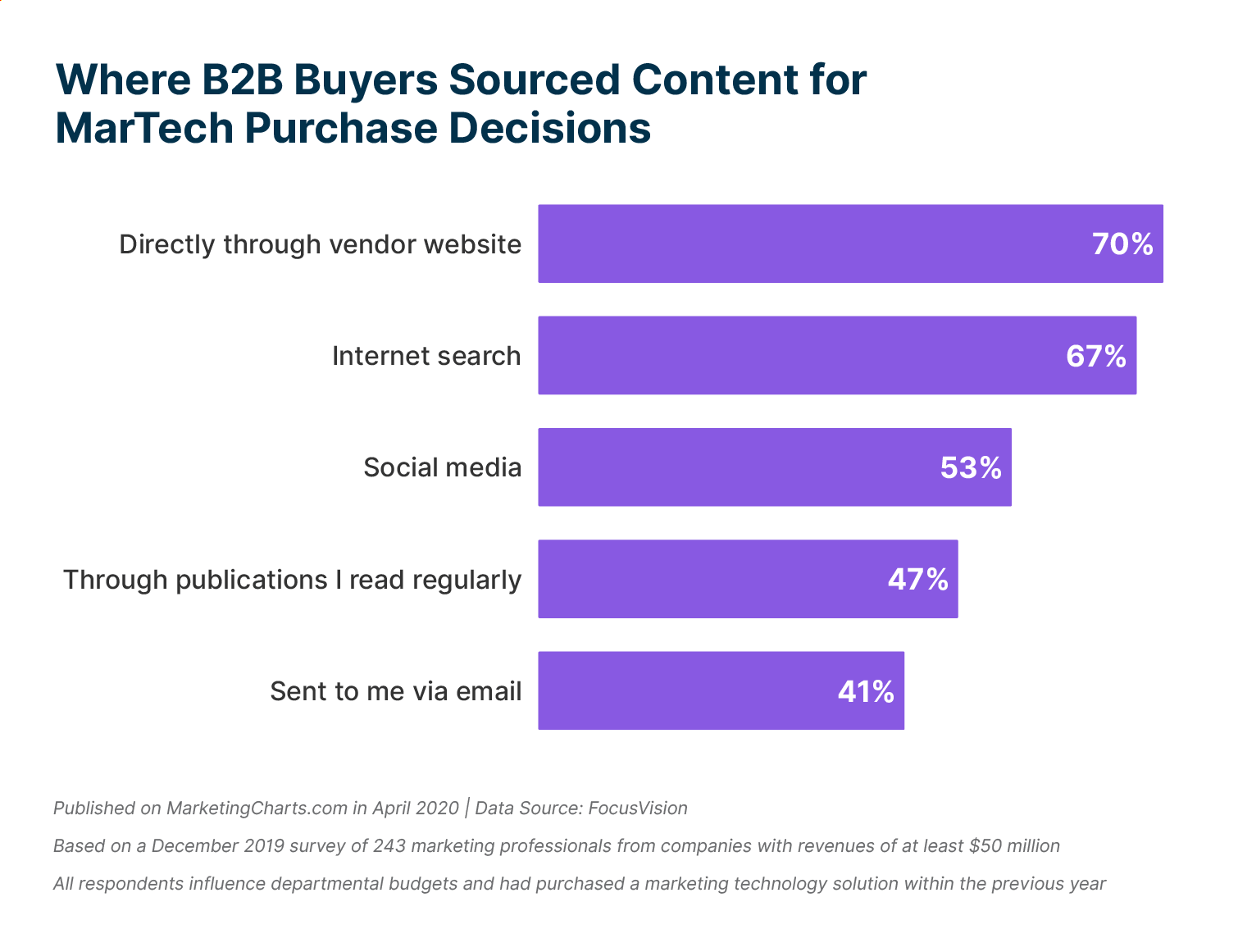
To meet this level of demand, companies must invest a significant amount of time and resources into creating targeted, high-value content for a variety of audiences. Publishing it once or twice on your own channels and hoping for the best is not enough to make your content investments worthwhile.
Content syndication means you squeeze every ounce of possible ROI from your best-performing content by continually sharing it with new audiences and on new channels with intentional, automated, and streamlined processes. Repurposing content in this way is a hallmark of leading content marketing strategies—HubSpot reports that a staggering 92% of blog leads come from “old” posts it optimizes and reshares!
Higher Lead Volume
Some content syndication benefits are just simple math. When you have a targeted strategy in place, you’ll earn more leads, and that means you’ll close more deals. Content syndication earns you qualified leads for your pipeline that your sales team can confidently engage and convert.
Cost-Per-Lead Campaigns
Cost-per-lead (CPL) is a pricing model through which you pay per lead generated by your campaigns. When you know your content syndication strategy will generate qualified leads, this model is a beneficial way to be cost-effective and accurately measure campaign ROI.
Unlike traditional content marketing strategies, which are effective but can be more vague as far as direct leads generated, CPL content syndication allows you to see and report on the exact number of leads each campaign brings in for your business.
Higher Lead Quality
The vast number of tools and technologies available to companies today means that generating leads in and of itself isn’t all that hard. The challenge is finding high-quality leads—ones that align with your target buyer profiles and actually have intent to purchase. Content syndication means intentional publishing on channels where buyers are already doing vendor research.
Instead of leaving your lead quality up to chance (and having to sort through tons of unqualified leads to find the ones worth pursuing), content syndication allows you to be confident that every lead entering your pipeline has likelihood to convert.
Brand Awareness
Content syndication puts your content on more channels and in front of more audiences on a regular basis. Your brand becomes more familiar and recognizable to buyers in your space. That means over time, you can expect more buyers to seek you out when they need your solutions.
Link Building
Link building is the process of increasing the number of inbound links to specific pages on your website to drive more traffic and increase that page’s search engine rankings. Increased rankings, as we know, means greater visibility and a higher chance you’ll catch the attention of potential buyers.
Link building can be challenging to do organically, but content syndication puts momentum behind the effort to give your traffic volume and rankings a boost.
Reaches Broader Audiences
Because content syndication features your content on third-party channels, it enables you to expand your brand reach to new audiences. You may discover new opportunities for adding a customer or market segment that may not have been on your radar before.
Should You Hire a Content Syndication Agency?
The truth is that content syndication isn’t impossible without the help of an agency—but it’s not advisable. Hiring an agency ensures you get the most out of your content syndication strategy.
They offer:
- Established, expansive networks for specific industries
- Proven, highly automated processes
- Access to content syndication tools and technologies
- Experienced, expert teams
- Frequent, data-driven performance reporting
- High levels of scalability
The best content syndication agencies work in close partnership with their clients. That means you’ll still have tons of input and control over how your strategy is executed and who your content reaches. But it also means your team can stay focused on the things you already do best in house. You don’t have to sacrifice the quality of one strategy just to implement another.
Further, you can scale your content syndication efforts up and down as needed to align with your budget, demand trends, seasonality, and any other factors that impact marketing decisions.
Finally, hiring an agency can help you save on costs since you won’t personally have to invest in additional staff or technology tools, can scale more easily, will execute a more seamless strategy, and can yield higher results thanks to your agency team’s experience and expertise.
What Content Syndication Tools Everyone Should Know About

Content syndication for B2B marketers has a high potential for return if you use the right content syndication tools. However, businesses often lose resources on poor-quality syndication tools that don't offer measurable returns or quality leads.
At ActualTech Media we take pride in our high-quality content syndication services and in this blog we’ll share the secret to finding the best tools in the business.
Learn what tools you need to perform content syndication and how to find the right tools for your industry and needs.
Key Takeaways
- Successful content syndication requires a syndication platform and network
- Use tools that are targeted and offer measurable returns
- Content syndication for lead generation generates the best returns
🤫 PS: Looking for pricing on content syndication leads? Get a price list here
What Tools Do You Need for Content Syndication?
Content syndication is a marketing strategy for distributing your digital asset to increase your awareness and generate leads. If you want to perform content syndication, you’ll need two primary tools.
Content Syndication Platform
Your content syndication platform is the vendor that distributes your content. It’s the technology and partnerships required for mass distribution. Depending on the platform you work with, they might introduce your content to new audiences or share it with targeted accounts.
Without a content syndication platform, you cannot perform content syndication at scale. Instead, you would rely on your small network of publishers, which will limit your return. However, content syndication can increase the number of publishers or third-party sites your content appears on. This, in turn, increases your return, whether that return is audience views or leads generated.
Content Syndication Network
A content syndication network is a partnership of sites willing to publish third-party content from vendors. They’re specific sites or platforms that have access to the audience you’re targeting. You can only access a content syndication network through a content syndication platform. That's why these two tools must work together.
5 Tips for Making the Most of Your Content Syndication Tools
Use this checklist of tips to help you maximize your ROI from content syndication by choosing the best content syndication tools available for content marketing for tech companies.
1. Use Direct Content Syndication Platforms
There are dozens of content syndication platforms available. However, not all platforms perform content syndication in the same way. Most platforms perform a passive content syndication strategy that distributes your content and waits for your leads.
Over 90% of web pages don't see any search traffic. If you’re hoping for leads from content syndication by publishing your content on random websites, you might not see results for months. Content syndication using Search Engine Optimization (SEO) strategies, while effective in some cases, relies on your audience finding you instead of you going to your audience.
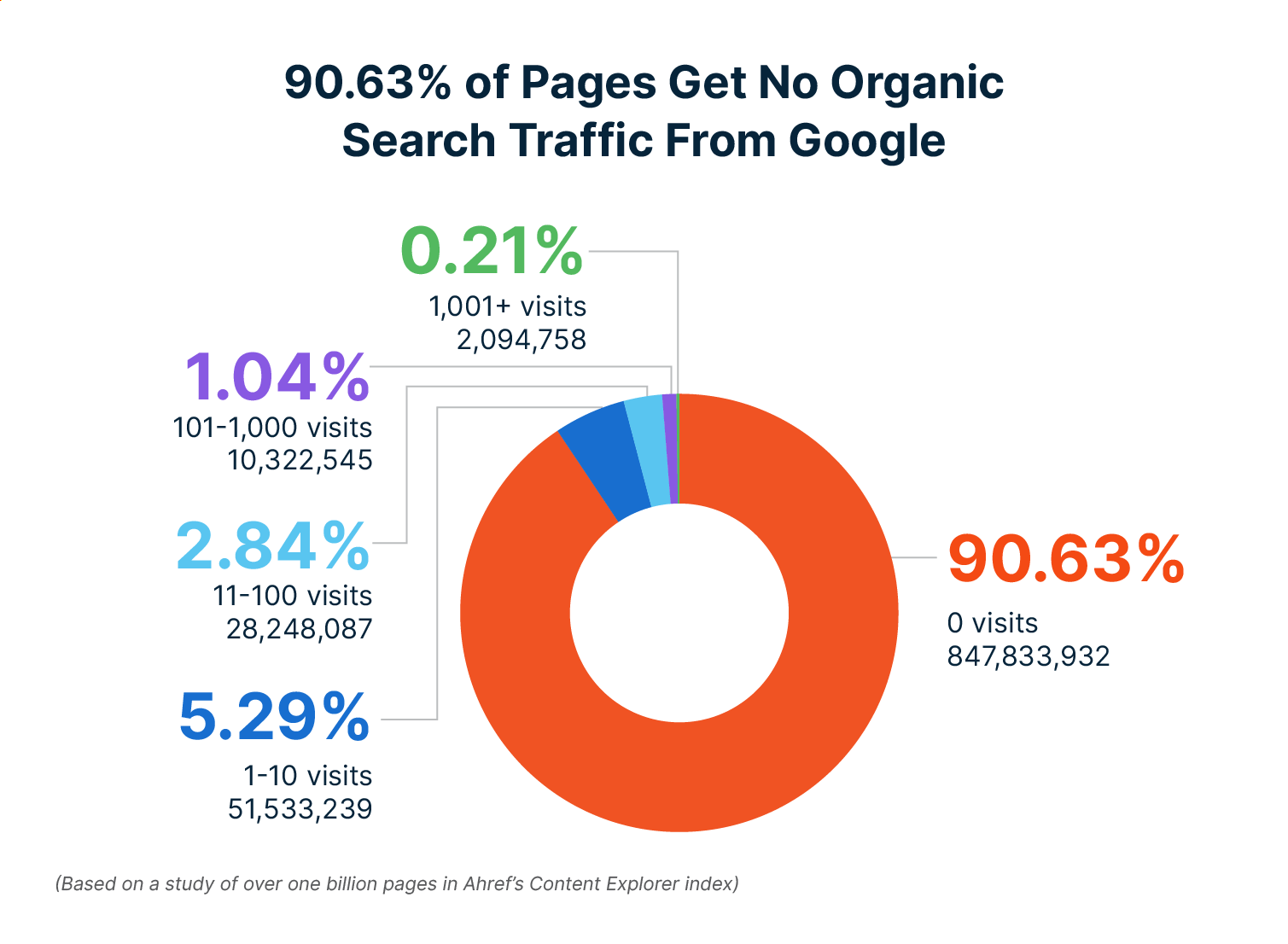
Instead, you can increase the traffic and interaction on your content by choosing a direct content syndication platform. These distributors put your content in front of your target audience to increase your chances of them reading or interacting with the digital asset.
2. Consider Your Content Syndication Tool's Filters
A content syndication platform that promises millions of leads is unreliable because those leads won't always end in a conversion. The key to numbers translating to sales is targeting the right audience rather than targeting a large number of consumers. Content platforms that blast your content on many website widgets have very little control over who actually sees the content.
If you’re paying for a specific number of leads, you want those leads to be quality leads. Therefore, before choosing a content syndication tool, ask the vendor what filters they offer. Then consider whether those filters are applicable and will help you reach your target audience.
Quality B2B content syndication vendors should have some of the following filters:
- Demographics
- Job titles
- Company size
- Geography or location
3. Find Measurable Content Syndication Solutions
Three-quarters of marketers measure their marketing campaign performance by examining how it influenced their revenue. In addition, 67% use lead generation as their primary metric of success.
Lead generation is one of the most valuable metrics for marketers because it’s easy to track. You can also see a direct impact on your revenue by monitoring how many leads turn into conversions for your business. Without a metric for tracking your campaign's performance, you don't know whether your resources have a positive return or whether you’re wasting your resources on low-value marketing channels.
Content syndication for lead generation provides measurable results because it isn't just a strategy for increasing awareness. Instead, you also gather your audience's contact information and data to measure your success and focus your budget on the most effective strategies.
The following video explores some of the best strategies for inbound lead generation, including what content performs the best as lead magnets that you can use in content syndication.
4. Look for Content Creation Solutions
The first step of content syndication is creating engaging and valuable content that your audience will want to interact with.
You’re more likely to create high-converting content when you invest in a content syndication platform that offers content creation tools. The experts who perform content syndication understand the industry and know what assets get the best results.
For example, at ActualTech Media, we see the most engagement on whitepapers, technical briefs, and videos. Some other content forms we can help you create include:
- E-books
- Infographics and guides
- Tech brief papers
- Videos
- Blogs
- Technical comic books
If you already have successful digital assets, you can ask ActualTech Media to choose the best option for each campaign to get the results you want to see.
Here’s an example of how your chosen digital asset may appear to your audience who download the content in exchange for their information.
 Image from SmartBlogger
Image from SmartBlogger
5. Request a Specific Format for Your Results
After investing in a content syndication platform, you’ll want usable leads. If your content syndication platform sends you back a list of disorganized or unusable leads, you won’t be able to convert those leads into customers.
A quality content syndication service will provide a spreadsheet of leads that are cleaned up and formatted to make importing a breeze. When you receive the list, you should be able to import it directly into your CRM database, where your marketing team can then use that information to nurture the leads.
Start Using Content Syndication for Lead Generation
At ActualTech Media, we use the latest content syndication tools in the industry to ensure your content is targeted and goes directly to your audience. Use our scalable services to get measurable results through quality leads ready for nurturing.
Contact us to learn more about our content syndication and the tools we use.
What Is a Content Syndication Platform (and Why Do You Need One)?

If your content isn’t bringing in the leads you need, it might not be in front of the right audience. Content syndication is your solution for targeting your ideal buyer persona through individual marketing campaigns. You’ll see more leads and better results in just a few weeks with the help of a knowledgeable content syndication platform.
Learn what a content syndication platform is, how it differs from a content syndication network, and why it’s the missing piece of your marketing campaign.
Key Takeaways:
- A content syndication platform connects you to a network of partners that publish your content
- A content syndication network includes the individual publishers that share content
- Free content syndication offers few filters and no metrics for measuring your success
- Using a content syndication platform brings in higher-quality leads and gets your content in front of the right audience
🤫 PS: Looking for pricing on content syndication leads? Get a price list here
What Tools Are Available for Content Syndication?
Content Syndication for lead generation requires a specific toolset that helps you reach the right people through the most relevant publishers. The two most essential tools for successfully syndicating your platform for maximum reach are a content syndication platform and a content syndication network.
Content Syndication Platform vs. Content Syndication Network
A content syndication platform is a service you use to distribute your digital asset. They are syndication providers that will take your B2B tech content and publish it across several locations or widgets. Then, as people interact with your content, the platform provider collects the leads and hands those leads back to you for nurturing.
Lead nurturing is a follow-up strategy where you build a relationship with your leads. You can nurture your leads by sending emails, making phone calls, and communicating with them. For your nurturing to lead to a conversion, you must ensure that the information you provide is relevant, answers their questions, and addresses any potential roadblocks that might keep them from purchasing your products.
A content syndication network is a collection of publishers that display your asset. You need to work through B2C or B2B content syndication vendors that offer platforms to access this network.
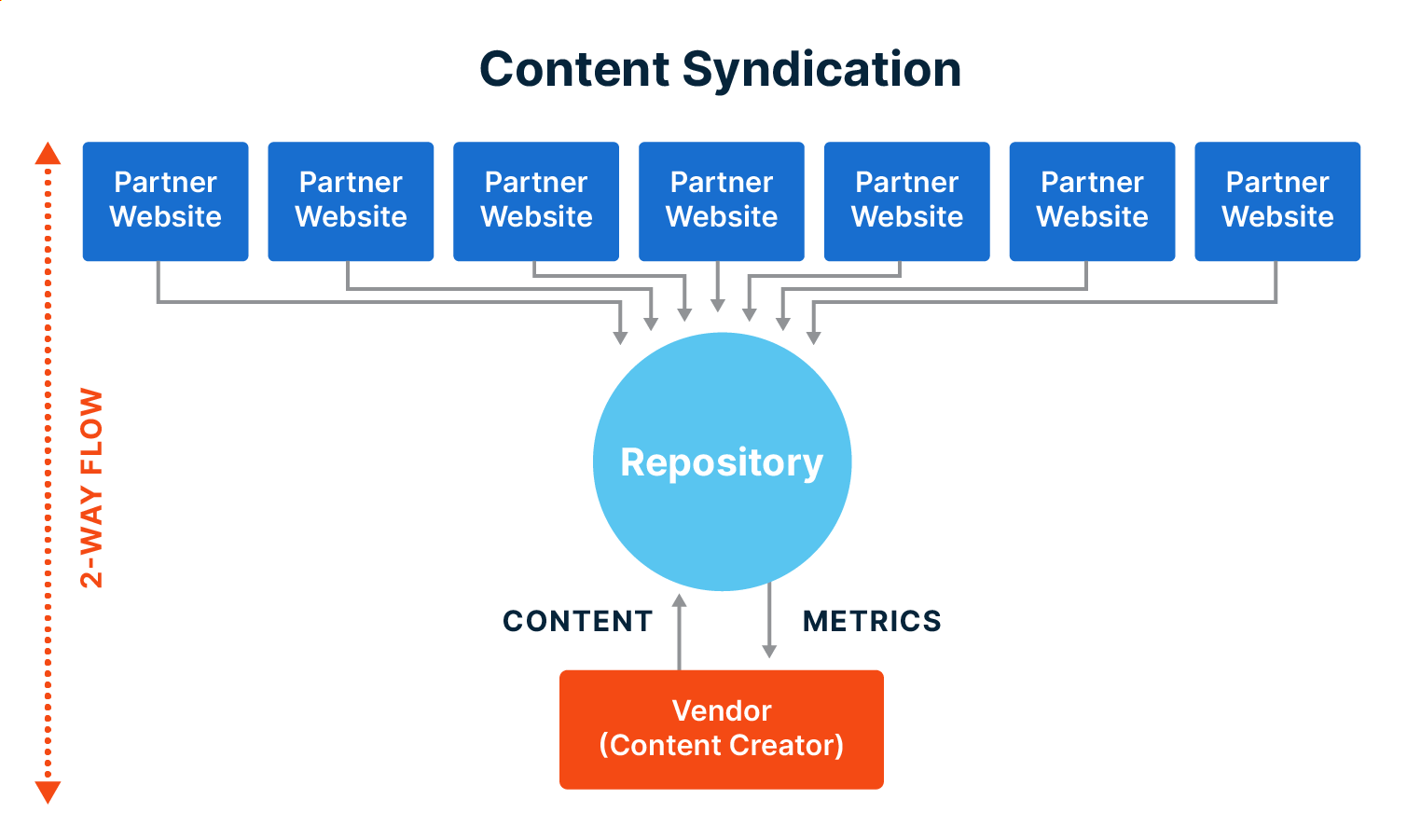
Different Types of Content Syndication
Content marketing for tech companies can include several content syndications processes and platforms to share assets.
1. Syndicating Content for Awareness
Content syndication often refers to republishing your content on a third-party website. This process doesn’t require a content syndication platform as you’re only targeting a single location. Some popular content syndication publishers are Medium and LinkedIn.
While content syndication on these websites will increase your views, you have no measurable way of knowing how successful your syndication was and don’t have a way to follow up with your readers to make a sale. You also receive limited reports on impressions, clicks, and interactions with the content.
2. Free Content Syndication for Lead Generation
If you want measurable results, then the digital assets you syndicate should be a download, video, or document that viewers can access in exchange for personal information. This allows the publisher to collect those leads and pass them back to you.
You can perform free content syndication for lead generation by publishing lead magnets on public websites. While you save money on content syndication, you won’t see many quality leads because free services or self-publishing your digital asset provides few filters for targeting a specific audience.
3. Mass Content Syndication Through Syndication Networks
When you work through a platform like NetLine to distribute your asset, you can reach many people with your content. Its process involves uploading your media to the platform once and sending it to that platform’s network of publishers.
Your asset will often appear in widgets that its network of partner publishers have installed on their websites. As visitors go on these partner websites, they see the digital asset there and have a chance to interact with it.
4. Direct Content Syndication to a Targeted Audience
ActualTech Media falls into the fourth category of content syndication B2B marketers can use and works directly with the end audience. All three previous content syndication methods rely on users stumbling onto your digital asset to generate leads.
ActualTech Media brings in higher-quality leads by sending your asset directly to your target audience instead of waiting for them to come to you. We use dozens of filters, including:
- Company size
- Titles
- Location
- Geo
These filters let you target a specific audience for direct marketing and are how ActualTech Media can promote your asset to individual users.
The benefit of direct content syndication is that you increase the chances of your target audience seeing your asset. You can also use a targeted-accounts list, a list of specific businesses you already researched and want to connect with.
Because of the hyper-targeting process, you’ll see better quality leads from the platform. In addition, different settings like multi-touch options also guarantee higher-quality results. Multi-touch settings require viewers to interact with your asset several times before joining your list of leads.
Is a Content Syndication Platform Necessary?
The top challenge marketers face is bringing in more leads. A content syndication platform is a solution for targeting and collecting information from prospects.
While there are free options that don’t require a content syndication platform, they take more time and energy as you perform all the steps yourself. A content syndication platform connects you to more publishers and gives you the insights you need for targeting your audience and seeing your results.
A content syndication platform can be more than a gateway to a syndication network. For instance, ActualTech Media’s content syndication services include tools to help you create a content syndication strategy, including our made-to-order content. These templates make asset creation a breeze so that you have quality and valuable content to share with your targeted accounts.
Our team of experts is also available for support and assistance in the content syndication journey. They can recommend the best assets to use, filter out poor-quality leads to ensure your list is up-to-date, and provide industry-leading reporting and tracking features so you have measurable results.
How To Use a Platform and Network To Perform Content Syndication
The best way to get started with content syndication is to create content. Content syndication through ActualTech Media works with several types of media, including:
- Whitepapers or technical briefs
- E-books
- Videos
- Live webinars
- Images or infographics
- Blog posts or articles
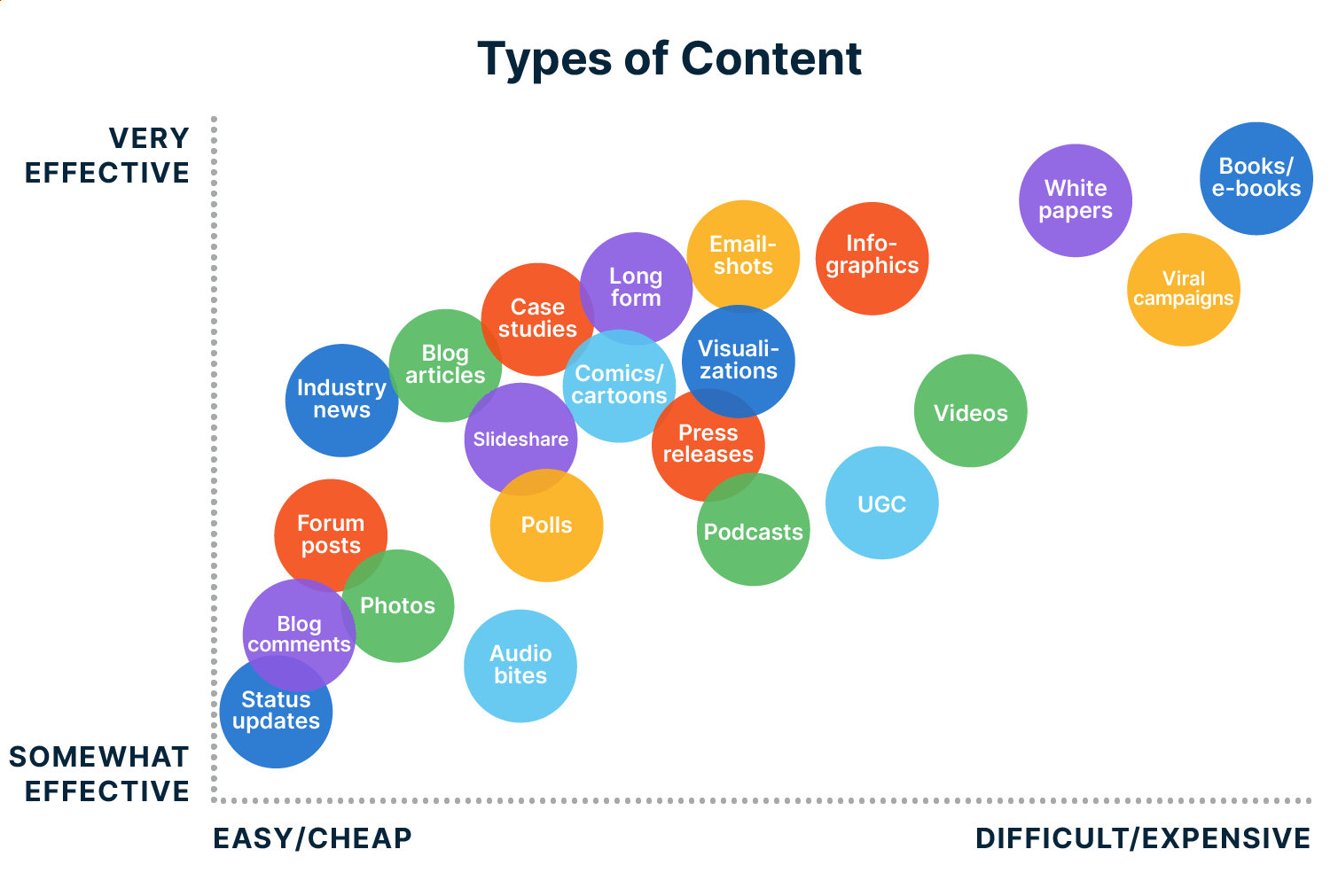
E-books and whitepapers are two of the most effective types of content for content syndication.
When you’re ready to start, contact our sales team to discuss your syndication goals, including the number of leads you hope to bring in and the time frame you want to run the campaign. These goals will be your benchmark for measuring your success.
You’ll use filters to designate your targeted accounts, then sit back and relax as ActualTech Media does the work for you. As the content reaches its audience, you’ll start seeing results. Typically, this can occur within two weeks.
ActualTech Media will send you a cleaned list of leads for you to input into your lead management platform. That list of leads is ready for your marketing team to nurture until they’re sales-ready. Because your leads are of higher quality, your marketing and sales teams will see more prospects turn into loyal clients after they nurture them.
Start Working with a Content Syndication Platform
If you’re interested in improving the quality of your leads and reaching more target accounts with your content, then talk to us about our content syndication solutions.
Our content creators will walk you through the content creation process before you work with our syndication team to distribute your digital asset to the right audience.
Contact us and get started with your content syndication campaign.
How ActualTech Media Can Help
At ActualTech Media, content syndication is one of our specialties. With the capacity to deliver hundreds of thousands of targeted leads per year at highly affordable CPLs, we’ve helped more than 50 of our clients generate leads to nurture and convert into sales opportunities.
Our content syndication services include:
- Advanced targeting
- Account-based marketing (ABM) programs
- Built-in nurturing with multi-touch campaigns
- Monthly syndication bundle offers
- Ability to syndicate written content, videos, and on-demand webinars
- Detailed lead reporting and tracking
Ready to learn more about how ActualTech Media can help you execute a content syndication strategy with confidence? Contact our team today!
